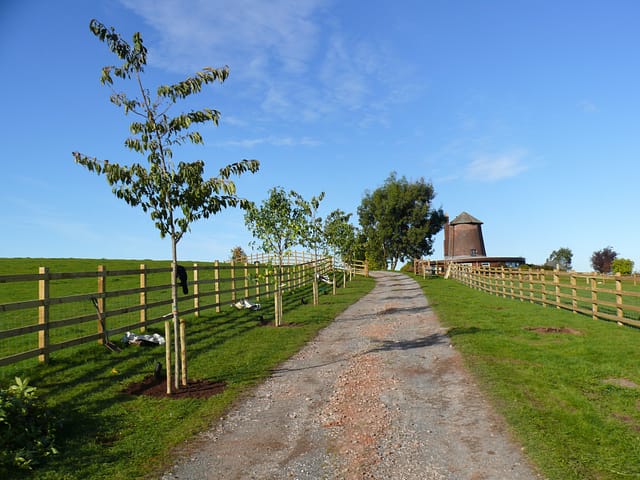For the majority of our clients we provide an Arboricultural Impact Assessment as part of the Tree survey and this should be carried out in advance of any development of the site. However, this can also be a technical standalone document used to support your planning application. Arboricultural Impact Assessments (AIA) are a written assessment which determines the effect of the development on existing trees. The British Standard 5837: 2012 Trees in relation to design, demolition and construction – Recommendations these guidelines direct that an Arboricultural Impact Assessment should inform the development process.
At the very beginning of the project and ideally when the plans are being drawn up the existing positioning and value of the trees is taken into account and this influences the overall design. This normally does not take place and as such the Arboricultural Impact Assessment (AIA) identifies trees to be retained and highlights potential conflicts with the planned development. Conflicts between trees and developments can include crown shading issues, or where foundations will enter the Root Protection Area (RPA) of certain trees that need to be retained. Additionally, where there are heavy construction vehicles this can also have an impact on nearby trees and would also be included in the AIA along with multiple other things.
The benefit of an AIA is that it identifies any potential conflicts between the existing trees and proposed development before they occur. This means mitigation can be put into place before any potentially dangerous and costly problems arise, the two main ones being roots dug through and killing the tree or making it unstable and the extended delay or even refusal of planning permission. Mitigation would include recommendations on construction of exclusion zones, construction techniques that are sympathetic to the trees whilst enabling the development of the site along with multiple other suggestions to enable the protection of the trees and the building of your project.
Arboricultural Impact Assessments also consider the impact of statutory designations such as tree preservation orders (TPO’s). The assessment identifies the long-term value and benefits of trees in the urban and built environment.

We were asked to look at a tree that was holding up the planning approval of a site near London. The tree was referred to as Cypress tree and as such had a Tree Preservation Order placed upon it meaning that under the existing AIA they did not want the proposed building to be within the root zone of this tree. These types of trees can be very old and some beautiful specimens exist and as such it was expected that the planners wanted to protect them.
However, when we conducted our site visit, we found that the tree had been misidentified and was actually Cypressocyparis leylandii ‘Castlewellan Gold’. Once we had identified it for what it truly was we were then able to appeal the TPO. This was based on the tree being a sub-variety of Leylandii, a tree that causes multiple issues between neighbours and is actually a variety that was bred as a hybrid cross. We recommended the removal and planting of a true Cypress tree at the bottom of their very long garden, where it would have no impact.
As we have said ideally we are involved before the plans are produced but in reality we are brought in after the plans and designs are created and sometimes after they have been submitted. So, the process below works on the premise that the design for the site has been created.
In concise language AIA’s identify problems and conflicts, between trees and the proposed development, what we do is mitigate those issues within the AIA so that the planning permission will be approved.
Town planners can sometimes use trees as a reason not to give planning permission for a project. As such our dedicated team of consultants deliver pragmatic solutions and are able to identify and recommend suitable mitigation measures. Due to our decades of experience, we can supply exactly what the planners like to see to ensure all the boxes are ticked. This will help to ensure a smooth progression through the planning and development process.
If you have any questions or have an issue with a planning application due to trees please give us a ring on 01782 479479 (Head office) or email us at: [email protected]. We are here to help and will are open 7am to 9pm Monday to Friday and 8am to 8pm Saturday and Sunday.
Why not follow us on Facebook to stay up to date with our latest news.
If you would like more information about our Arboricultural Impact Assessments, or to arrange a site visit from our specialist consultant, why not get in touch?
ProHort know that getting value for your money is of the utmost importance, especially when coordinating development of a property. In line with this, we will always provide our best price, first time, for all of the services we provide.
Prices for a full Arboricultural Impact Assessment can vary depending upon a range of factors, including the size of the garden and the complexity of the project.
Please enquire now for more information.